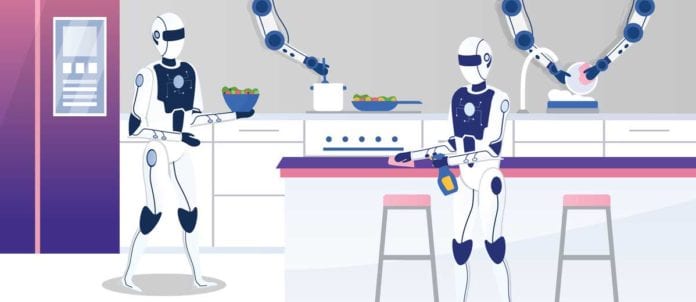Shifts within the industry have been accelerated as foodservice operators have been forced to re-evaluate and pivot their operations, spurring new demand for technology and equipment.
“As COVID-19 has changed the landscape for the industry, we’re starting to see a lot of foodservice companies start to shift their attention towards smarter, more-efficient equipment,” shares Charles Rothman, regional Sales manager and Social-Media manager at Mississauga, Ont.-based Food Service Solutions (FSS). “The entire industry, since March, has had to pivot in order to adjust with the current climate and find a viable way to be profitable.” He points to combi- and high-speed ovens as key products that have seen recent demand spikes.
Louis-Philippe Audette, president of RATIONAL Canada, also notes a marked increase in demand for kitchen automation and smart equipment. “This has been the toughest time for restaurants to navigate through, from many perspectives,” he explains, noting the business fluctuations and compounded staffing challenges created by the pandemic.
And, while many had been eying smart kitchens pre-COVID-19, the operational and cost benefits they offer have pushed smart equipment into the spotlight. “At the end of the day, it’s about viability and profitability,” says Rothman. “Where smart kitchen equipment really stands out is in the key areas of restaurants’ ability to manage costs and drive revenue. Smart equipment eliminates the need for other pieces of equipment, which immediately makes [opening] a foodservice business more viable — lower overhead, less operating costs and smart technology is generally ENERGY STAR-approved equipment.”
Certain equipment combinations (see sidebars) are designed to improve kitchen management, business operations and use of space. They also leverage the Internet of Things (IoT) to create greater efficiencies. With this built-in functionality, cooking processes require less oversight, freeing up staff for other tasks. “And, of course,” adds Rothman, “the biggest cost for the industry, outside of the cost of goods, is labour.”
High-speed ovens, such as the Xpress Chef line also offer features such as remote menu management and connectivity to easily standardize and update recipes. Given these ovens’ versatility, Rothman says FSS has seen a spike in requests for this equipment across the country.
Additionally, there’s the added benefit of the simplicity of use that comes along with the built-in technology. Along with the ability to program recipes and automate processes comes greater simplicity when training staff.
“You’re able to bring in people with less experience at a lower cost and to efficiently train them to create recipes just as a higher-level chef would,” says Rothman.
And, with the insights and analytics afforded by smart technology, further efficiencies can be achieved. Equipment can record health-and-safety data, monitor its functionality and provides alerts when cleaning or maintenance is needed. “What we’ll see more of in the future is more products becoming part of this connected hub,” says Danielle Forget, Marketing manager, RATIONAL Canada. “It’s allowing business owners to gain intelligence on their kitchen that was never possible before.”
Beyond cooking equipment, smart kitchens encompass a range of other technologies that serve to further streamline back-of-house operations. For example, Boston Pizza began rolling out QSR Automations’ ConnectSmart Kitchen graphical-display system in Canada in 2018. The display system features kitchen video, programmable prep times and access to real-time production information to help handle workflow and ease communication in busy kitchens.
Additionally, cubby/locker systems are being more widely considered as an order-pickup solution in the current environment. These systems allow food to be transferred directly from the kitchen to self-serve compartments accessed by customers and delivery curriers. For example, Cubby Smart Kitchen was recently launched in Toronto by the founders of Naan & Kabob Group. The virtual-kitchen concept, which offers five menus, features self-serve order kiosks and food cubbies. Box’d by Paramount — Paramount Fine Foods’ fully automated restaurant concept, which launched in Toronto this summer — also utilizes digital cubbies and shelves to identify orders and create a streamlined experience. “The state-of-the-art technology used throughout Box’d will revolutionize and transform how consumers experience dining on-the-go and will help our guests feel safe,” says chef Tomer Markovitz, who developed the menu for Box’d. “With one chef per meal, all meals are sealed and delivered to sanitized, individual cubbies, which simplifies the process and keeps cleanliness and safety top of mind.”
“In order to rebuild our industry and get back to solid ground, we need to either be able to keep our heads above water until we have a vaccine and normality again or we’re going to have to have other types of solutions in order to keep generating revenue from the public to keep everyone afloat,” says Rothman.


















